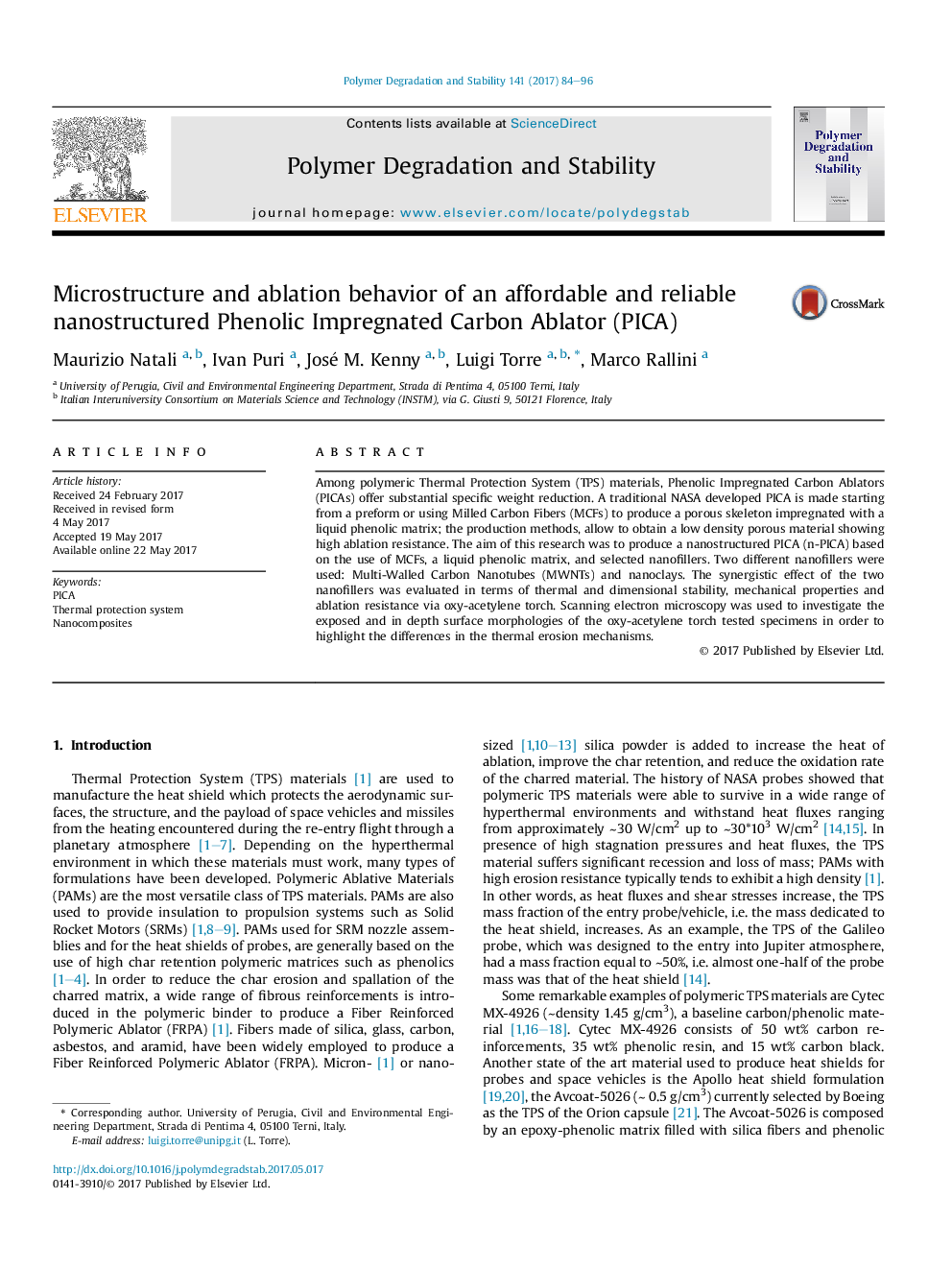| Article ID | Journal | Published Year | Pages | File Type |
|---|---|---|---|---|
| 5200687 | Polymer Degradation and Stability | 2017 | 13 Pages |
Abstract
Among polymeric Thermal Protection System (TPS) materials, Phenolic Impregnated Carbon Ablators (PICAs) offer substantial specific weight reduction. A traditional NASA developed PICA is made starting from a preform or using Milled Carbon Fibers (MCFs) to produce a porous skeleton impregnated with a liquid phenolic matrix; the production methods, allow to obtain a low density porous material showing high ablation resistance. The aim of this research was to produce a nanostructured PICA (n-PICA) based on the use of MCFs, a liquid phenolic matrix, and selected nanofillers. Two different nanofillers were used: Multi-Walled Carbon Nanotubes (MWNTs) and nanoclays. The synergistic effect of the two nanofillers was evaluated in terms of thermal and dimensional stability, mechanical properties and ablation resistance via oxy-acetylene torch. Scanning electron microscopy was used to investigate the exposed and in depth surface morphologies of the oxy-acetylene torch tested specimens in order to highlight the differences in the thermal erosion mechanisms.
Related Topics
Physical Sciences and Engineering
Chemistry
Organic Chemistry
Authors
Maurizio Natali, Ivan Puri, José M. Kenny, Luigi Torre, Marco Rallini,
